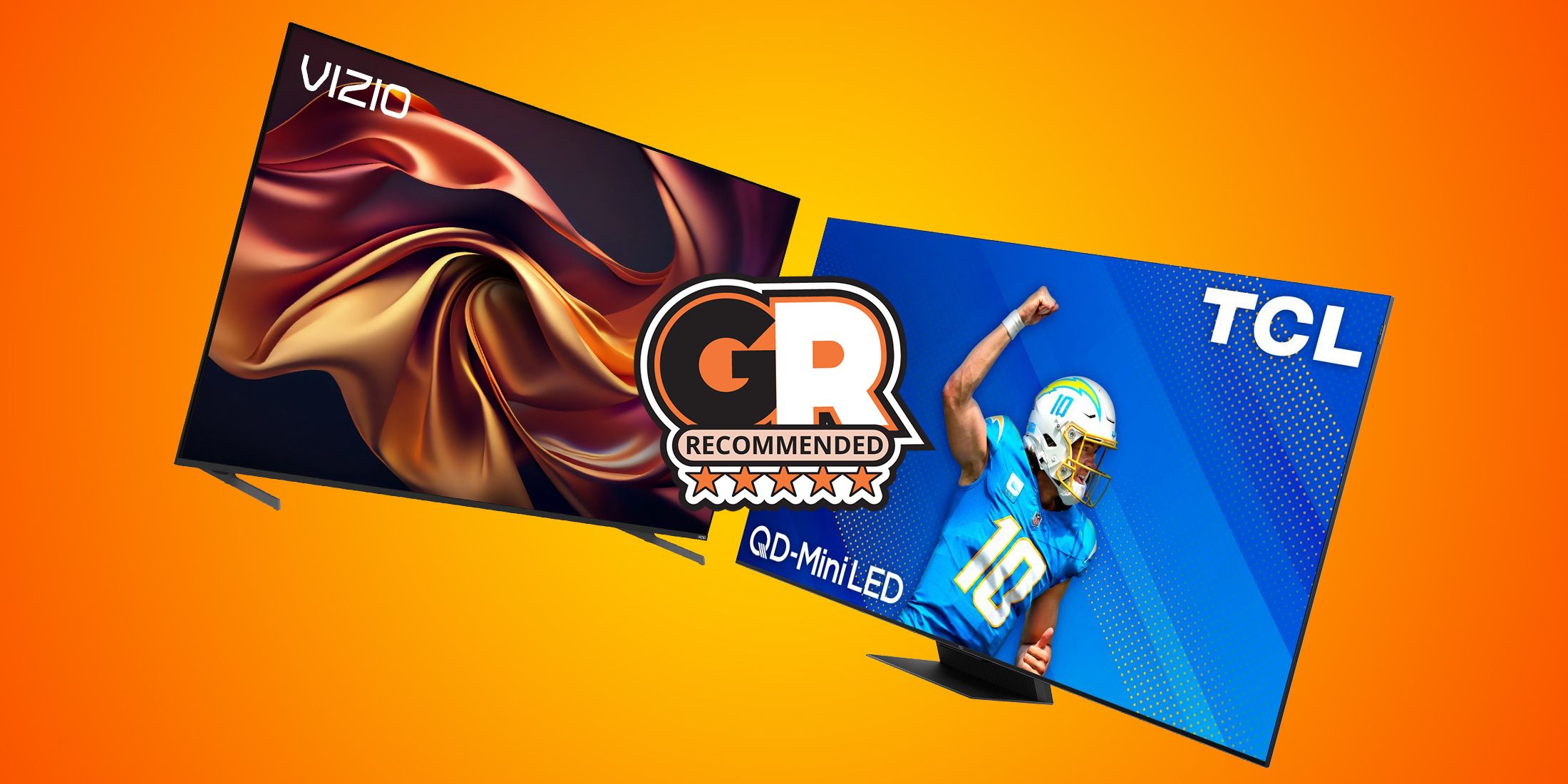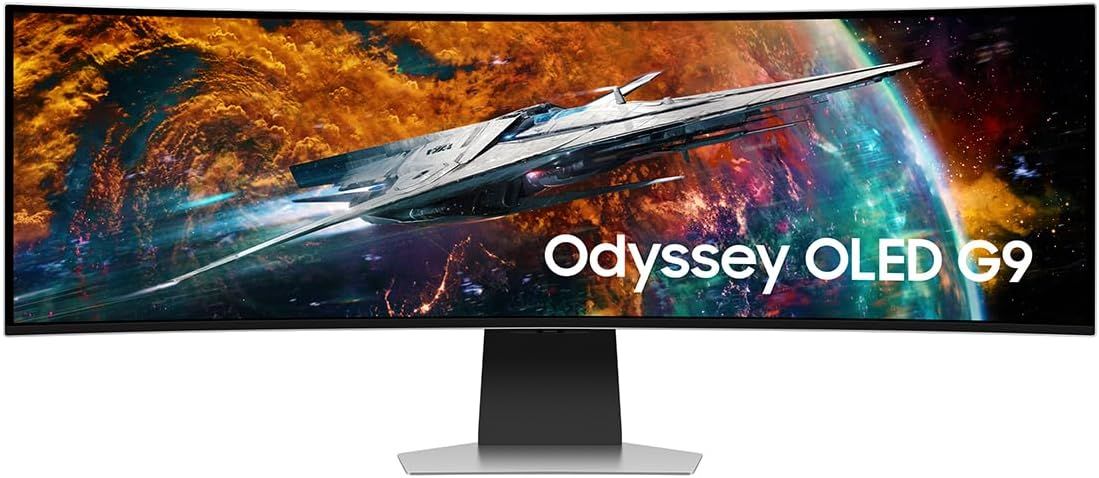The latest offering in Samsung’s 49-inch ultrawide OLED gaming monitors, the Odyssey OLED G95SC is now available for purchase. It went up for pre-orders last month and claims to be the first 49-inch OLED monitor. It boasts a massive DQHD OLED with 5120X1440p resolution and blazing-fast 240Hz refresh rate. Priced at $2200, it follows the futuristic design of Samsung’s Odyssey lineup of hardware and is silver on the back.
Samsung 49 Odyssey OLED G95SC Ultrawide Monitor Specifications
As the name suggests, the ultrawide gaming monitor comes with a 49-inch curved OLED display and has a 1800R curvature for complete immersion. It has a 32:9 aspect ratio and 5120X1440p resolution. Even though it has a typical brightness of 250 nits, Samsung says it is VESA DisplayHDR True Black 400 compatible and supports HDR10+. What makes this massive display a true gaming monitor is the 240Hz refresh rate and an advertised 0.03ms response time.
Samsung 49 Odyssey OLED G95SC Ultrawide Monitor Availability
Last month, the monitor was available for preorder via Samsung, Best Buy, and Amazon with a $250 credit or gift card as a preorder bonus. Now that the monitor is available for purchase, those looking to invest will have to shell out the full $2200 before taxes to experience Samsung's latest and greatest G9 monitor in all its OLED glory. The Samsung 49 Odyssey OLED G95SC can be purchased from Amazon, Best Buy, Newegg, or directly from Samsung.
The 49-inch Ultrawide Gaming Monitor Market
Currently, there are quite a few 49-inch gaming monitor options in the market, some more budget-friendly than the rest, but none of them offer OLED panels with inky blacks and ultra-low response times. Other than Samsung, brands like LG, Asus, Dell, Phillips, AOC, and more also have offerings in the 49-inch ultrawide gaming monitor segment. The LG 49WL95C-W boasts the same 5120x1440p resolution as the Odyssey OLED G95SC, but has an LED panel and only a 60Hz refresh rate. Dell has its UltraSharp U4924DW, which is an LED-backlit LCD monitor that has a DQHD resolution, but also only a 60Hz refresh rate. Both these options are significantly cheaper than the Samsung offering.
As for 49-inch ultrawide monitors with a high refresh rate, the options are a bit limited. The Asus ROG Strix XG49VQ features a 144Hz refresh rate and a 4ms GTG response time, but comes with a lower 3840x1080p resolution. Another high refresh rate offering is the AOC Agon AG493UCX2, which features a snappy 165Hz refresh rate with QHD 5120x1440p resolution. While the resolution and refresh rate is pretty comparable to the Samsung Odyssey G95SC, the VA panel holds it back compared to the OLED screen's infinite contrast and excellent viewing angles.
Things To Consider
With monitors of this size, there is usually a lot more planning that goes in when setting it up. The Samsung 49 Odyssey OLED G95SC will make most desks look tiny and will take up a lot more space, especially considering how much it curves. The viewing distance will be another consideration as sitting too close to the monitor would have the user constantly moving their head from side to side. Furthermore, because of the 28.4 lbs weight of the Odyssey G95SC, users will have to be careful about choosing the appropriate monitor arm in case they intend to mount the monitor on a wall or on their desks to have more space.
Another thing to consider is that because this is an OLED panel, it may not be the best option for those who need to do a lot of reading. Because of how the pixels are laid out on this Samsung OLED monitor, and most other OLED panels for that matter, the text seems to look a little weird. The ClearType text settings in Windows don’t work well with OLEDs. However, this is not an issue when it comes to gaming.
Final Thoughts
Samsung currently seems to be leading the market when it comes to 49-inch ultrawide gaming monitors. While users can get most of the features like the 5120X1440p resolution and comparably high refresh rate (165Hz on the AOC offering) from other brands for cheaper, no 49-inch ultrawide gaming monitor offers an OLED display and the ultrafast 240Hz refresh rate. These features are what take the price of the Samsung 49 Odyssey OLED G95SC over $2000.
FAQ
Q: Is OLED better for competitive gaming?
OLED panels are capable of much higher response times than LED-backlit IPS, VA, or TN panels. Considering there are OLED gaming monitor options that reach 240Hz refresh rate, OLED panels are ideal for competitive gaming. However, they are generally more expensive than their IPS, VA, or TN counterparts, and can suffer from burn-in if parts of the screen display a static image for long durations. For this reason, most modern-day panels come with Pixel Shift technology which prevents OLED burn-in.
Q: What is the difference between VA and OLED?
VA or Vertically Aligned panels generally offer good color accuracy and viewing angles compared to TN (Twisted Nematic) panels, but they can suffer from ghosting caused by poor pixel response times. OLED or organic light-emitting diode technology is different from LCD because it does not require a backlight. They offer the fastest response times, accurate colors with deep blacks, and are more energy efficient. However, OLED monitors or TVs can suffer from burn-in and are typically more expensive.
Q: Is OLED worse for eyes than LCD?
OLED is believed to be better for the eyes as it emits lower levels of blue light compared to LCDs which can minimize eye strain. OLED also has the advantage of having more accurate color reproduction as well as better contrast.





